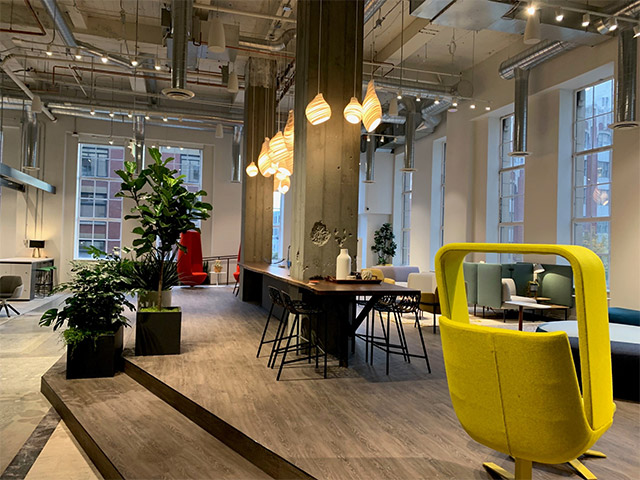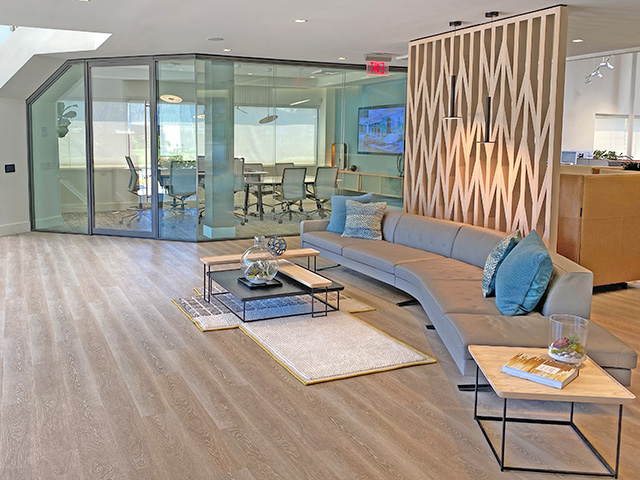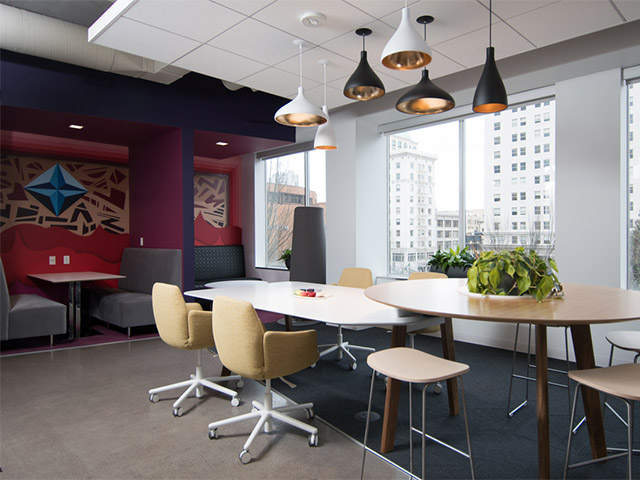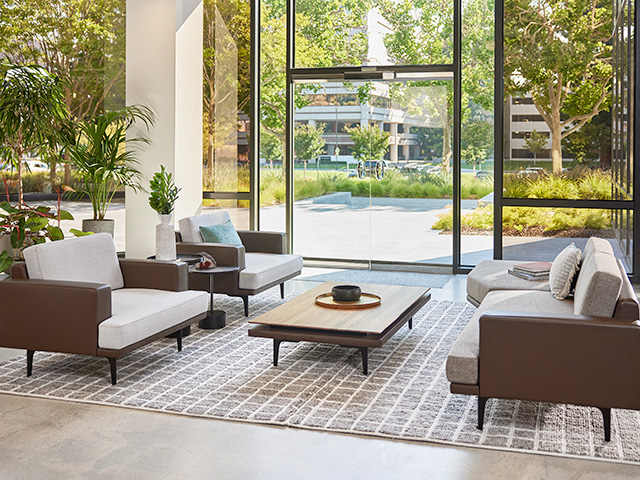Schedule A Visit
at one of our five Customer Experience Centers today!

Los Angeles
444 South Flower Street, Suite 200
Los Angeles, CA 90071
310.726.9067




People work for many reasons—compensation, social connections, status. However, the most important drivers of work today might be the experience of creativity and problem solving, and finding meaning in one’s work. Some people bring a sense of meaning to their work, and some organizations create cultures that foster happiness and meaning in the employee work experience. In fact, happy employees are 30% more productive. As a bonus, they also have a 37% higher sales rate and demonstrate 3 times the creative capacity. (Source: Good&Co.com, Workplace Happiness: The High Cost of Unhappy Employees.) However, to date, the role of the design of the physical office space that surrounds people has been often unconsidered. So, let’s dive into why that is and how we address it.
Productivity at all costs as the ultimate purpose of office space was a hallmark of early hierarchical organizations, and probably drove the Baby Boomer mindset of bringing the “work only” version of themselves into the office. With recent flatter organizational models and new generations of employees, this view of work and workplace is shifting. The now dominant Millennial workforce blends their work and personal life, bringing a more holistic version of themselves into the office. This means the need for belonging, connection, contributing to a greater good, and a sense of meaning at work is of greater importance.
Organizations are also embracing “employee engagement”. The evolving intent of workspace is to foster engaged employees who are more likely to stay (avoiding replacement costs) and may work harder (improving productivity). This sounds to us like a modern way of re-framing the control of costs and increased productivity. Many organizations encourage engagement through innovative technologies, work-life balance, and related policy efforts. According to the 2017 World Happiness Report, activities that increase social capital—such as support people receive from peers—are connected to happiness and higher engagement.
An emerging global movement prioritizes happiness and a meaningful life and work, rather than traditional measures of GDP or productivity. A happy work life can help lead to less frustration, improved contentment, relaxation, and sense of well-being. Naturally, benefits such as reduced stress, lowered physical and mental health risks, and increased engagement and performance often tag along with this state of being.
Haworth (our manufacturing partner) ran a global program studying how the design of a workspace can be leveraged for happiness and meaningful work involving over 2,000 office workers. Participating organization worksites included a mix of business headquarters and Haworth sales and administrative facilities. The analysis identifies a broad array of features: ambient environment (noise, acoustics, lighting, air quality, etc.), planning features, workspace types, furnishings, and technologies that impact measures of meaningful work, frustration, happiness, well-being, and contentment. In these analyses, potential effects of generational affiliation and job level are controlled. So, the insights from this research can apply to the broader global population regardless of age or job level.
The analysis shows that two work experiences directly influence happiness:
The next step was to determine which environmental features, if any, have an impact on employee ratings of being valued, and ability to focus. When considering this, let’s remember that people spend 93% of their time in a built environment. (Source: EPA, The National Human Activity Pattern Survey, 2001.)
Haworth found that five features of office design affect employees feeling valued. These include: the overall ability to see peers, understand the layout of the space, degree to which workspaces indicate their intended use, adjustability of primary workspace features, having the right access to daylight from the workspace, and adequate workspace storage. Space legibility and access to daylight have the largest impact on feeling valued. This makes sense since these two features are part of the overall ambient work environment, affecting everyone regardless of location or type of space used.
Two of the mentioned features that influence feeling valued also influence workers’ ability to focus. These include the overall legibility of the office space and adaptability of the individual workspace. Legibility conserves resources that can be used for focus, and control over primary workspace can provide people with enough autonomy over how they can best focus in that space.
Here are some questions to ask yourself when considering how your current or future workspace supports people’s happiness:
The notion of designing for “happiness” may sound trivial and unrelated to the bottom line. But there are broader trends driving the move towards happiness as a new metric for success in work and life, even replacing economic metrics such as GDP for entire countries. When compared to the narrower focus of engagement as a business metric related to employee retention costs, a broader organizational goal such as happiness provides benefits to both employers and employees. Haworth’s research shows specific workplace design features can support a higher aspiration, that of happiness.
Meeting the needs of employees so they can do their best work requires a multifaceted approach that takes into consideration new technologies, the physical environment, and the shifting mindsets of a multigenerational, multicultural workforce.
Our bottom line: Successful organizations create intentional workspace strategies to address the intersection of people’s needs—physical, cognitive, and emotional—to achieve desired outcomes.
“Happiness is connected to the basic goals of any business organization, such as productivity and retention—the difference is that there is also a direct benefit to the quality of employees’ lives.”
– Dr. Michael O’Neill, Haworth, Inc.
FOR MORE INFORMATION, PLEASE CONTACT
Michelle Sample
marketing@peoplespace.com

444 South Flower Street, Suite 200
Los Angeles, CA 90071
310.726.9067



